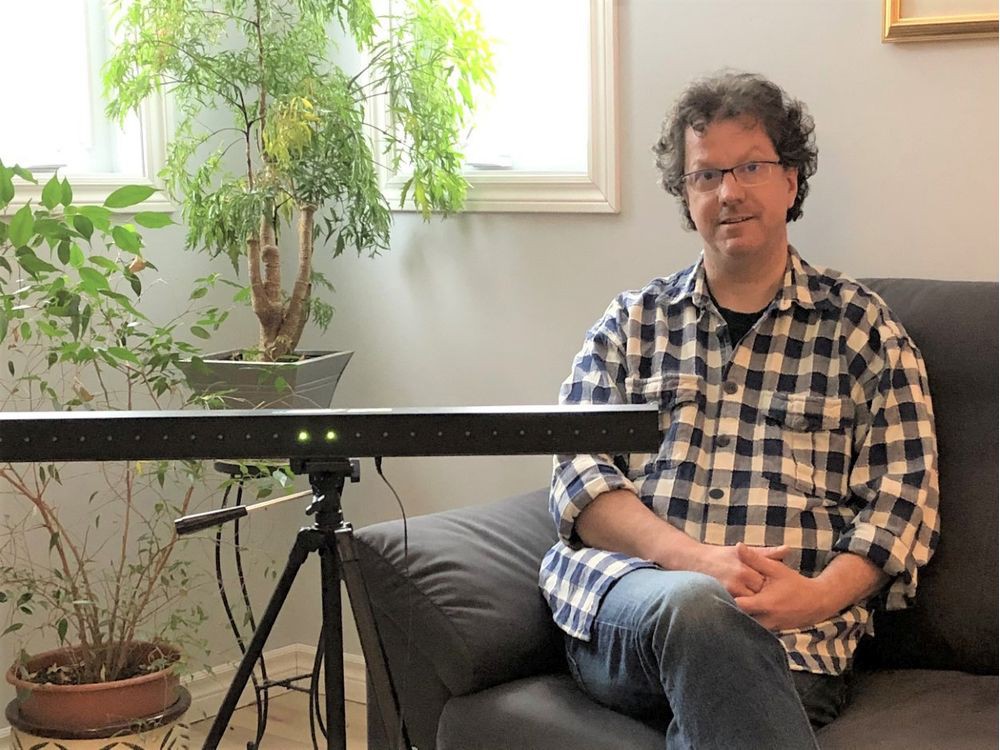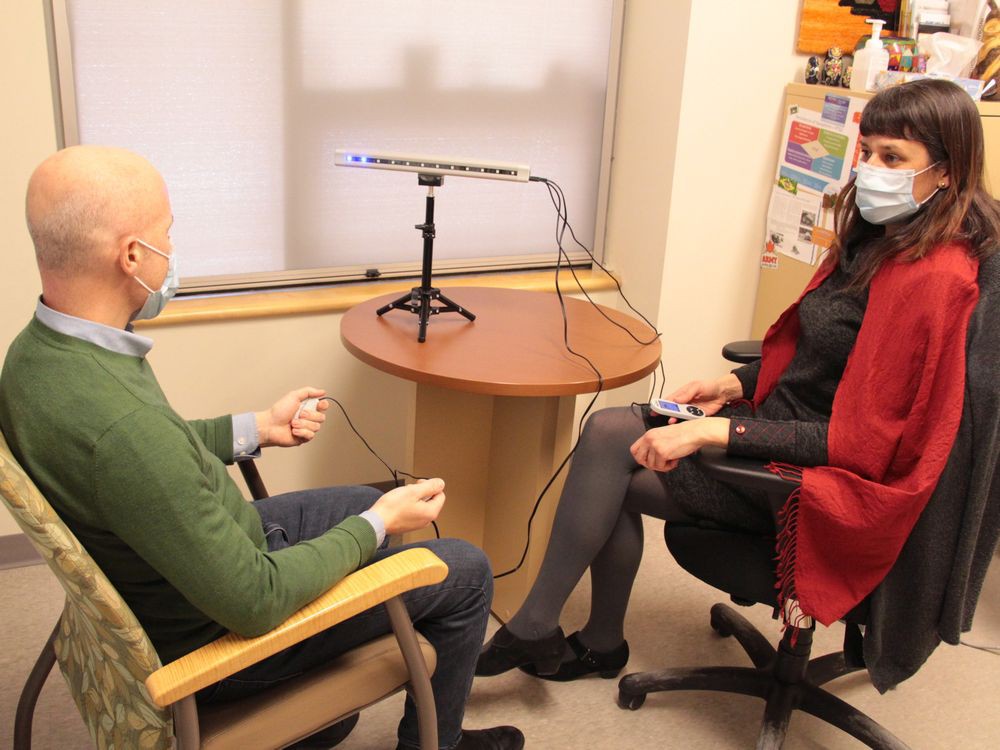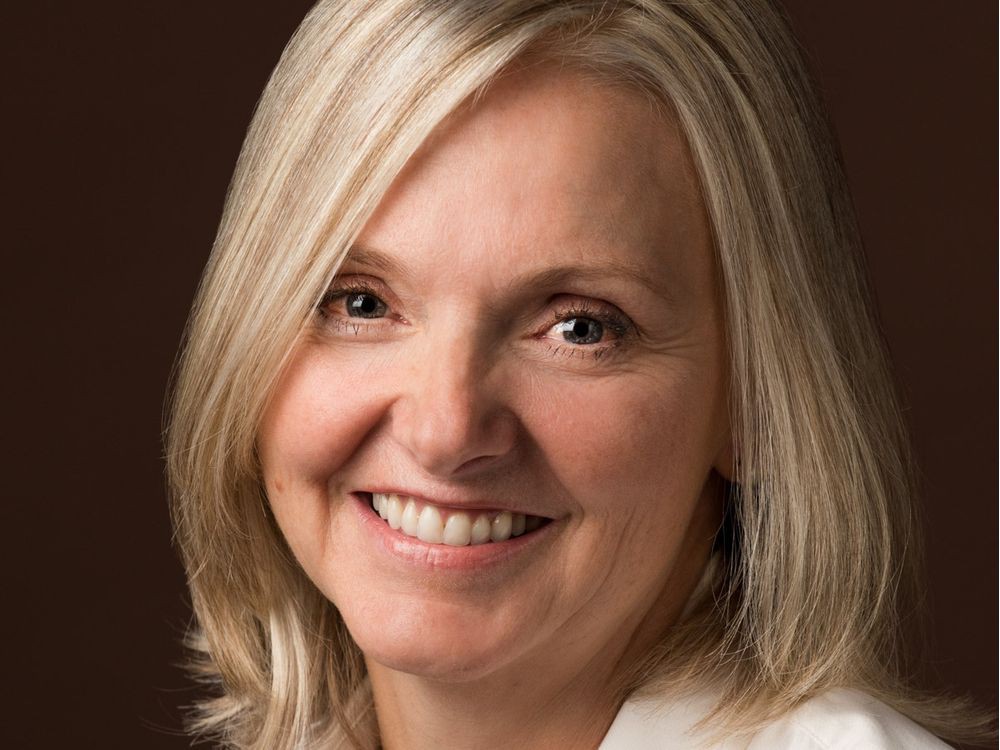An unconventional eye-movement therapy that can treat everything from chronic pain to PTSD is pushing the boundaries of psychotherapy in unexpected directions. Andrew Duffy reports on the growing number of therapists and researchers in Ottawa and beyond using EMDR.

Article content
When he first read about a new psychotherapy that used eye movement to help alleviate patients’ trauma, psychologist Philippe Gauvreau was deeply skeptical.
The field was beset by pseudoscientific fads, and he was convinced Eye Movement Desensitization and Reprocessing (EMDR) was just another one. The therapy combines exposure therapy with guided eye movements: Typically, a patient is asked to track a therapist’s hand while thinking about a traumatic event.
Proponents insisted EMDR could change the way difficult memories were stored in the brain, making them easier to manage for those with post-traumatic stress.
“Like many, many, many psychologists, I went, ‘What is this BS?’ This is a bunch of hooey,” remembers Gauvreau, a practitioner in the Outaouais.
He became so exercised by EMDR’s entry into the field of psychotherapy that he resolved to train in the technique so he could more knowledgably dismantle it as a treatment. In October 2000, he enrolled in an EMDR course in Ottawa – and changed his mind.
I just fell in love with the approach,” he says.
For the past 20 years, Gauvreau has employed EMDR in hospitals and at his private practice in Maniwaki. He has qualified as an EMDR trainer, led more than 30 training sessions, chaired Canada’s annual conference for EMDR, and researched EMDR’s ability to treat anxiety.
He’s now among a growing number of therapists and researchers exploring EMDR’s use on everything from chronic pain to depression to addiction. EMDR has also inspired new eye-involved treatments – variants such as Brainspotting, Flash Technique and EMDR 2.0 – that are pushing the frontiers of psychotherapy in new directions.

“In psychiatry, we had been focused for so long in the mind that we’d forgotten the body,” says University of Ottawa psychiatry professor Dr. Jeanne Talbot, who also holds a doctorate in neuroscience.
EMDR and its offshoots ask clients to be aware of what’s going on in their bodies at the same time that they’re thinking about a traumatic incident. Talbot, who has trained in Brainspotting, has seen clients experience pronounced physical reactions during treatment sessions.
“We have to be cautious because we’re all burned out psychiatrists and this is a difficult field, but when it works, Brainspotting is like psychodynamic therapy on speed,” she says, referring to a more traditional and holistic psychotherapy.
Finding an effective treatment for trauma is a central pursuit of psychotherapy research since unresolved trauma is at the root of so many mental illnesses and addictions. “That stuff from the past we haven’t been able to get over, that stuff feeds our current situation,” says Gauvreau.
EMDR is the brainchild of Brooklyn-born psychologist Dr. Francine Shapiro, who conceived of the therapy while on a walk in May 1987. She had gone to a San Francisco Bay area park, and was dwelling on a traumatic memory from her own past — she had recently overcome breast cancer — as she darted her eyes left and right to take in the scene. For some reason, her unease lifted.
“I wanted to see if it would work if it was deliberate,” she once recalled, “so I brought up something that bothered me, moved my eyes in the same way, and saw the same thing happening.”
She later found that her eyes moved rapidly back and forth, spontaneously, whenever a disturbing thought came to mind. “The thoughts disappeared,” Shapiro wrote in her book on the subject, “and when I brought them back to mind, their negative charge was greatly reduced.”
She enlisted friends to try it and discovered that eye movements alone did not ease the pain of troubling memories. So she developed a treatment that evolved into the eight-phase program now known as EMDR. In its key phase, Shapiro had clients bring a traumatic event to mind while tracking her fingers as she moved them left and right for 20 to 30 seconds.
The first scientific studies of EMDR were published in 1989, and in the three decades since then, more than 30 randomized controlled trials have confirmed it as an effective treatment for PTSD. Those studies have found that EMDR can significantly reduce PTSD symptoms.
“What is effective in EMDR is not new, and what is new is not effective,” Harvard University psychologist Richard McNally wrote in 1999.
Others criticized proponents for outracing the science with zealous marketing. “EMDR provides an excellent vehicle for illustrating the differences between scientific and pseudoscientific therapeutic techniques,” University of New England psychologist James D. Herbert declaimed in the Clinical Psychology Review.
In succeeding years, however, scientific evidence mounted in support of EMDR’s effectiveness. Therapists reported breakthroughs with PTSD in relatively short periods of time. Its popularity spread.
In 2013, the World Health Organization endorsed it alongside cognitive behavioural therapy (CBT) as an advanced treatment for PTSD. Four years later, the U.S. Department of Veterans Affairs recommended it as a first-line treatment for PTSD. The International Society for Traumatic Stress Studies followed suit.
In 2017, the American Psychiatric Association conditionally recommended EMDR for the treatment of PTSD, but gave a stronger rating to CBT and prolonged exposure therapy. (The advisory panel, however, acknowledged its recommendation could change based on new evidence.)
Before the therapy, a clinician will evaluate a client, offer some self-calming techniques, and identify a distressing memory along with the negativity that goes with it. For example, if someone was in a serious car crash, the individual might say something like, “I don’t feel safe.” The therapist will offer an alternative idea to replace it such as, “I’m a survivor.”
In the critical “desensitization” phase — the only one that involves eye movement — a client is asked to concentrate on the traumatic memory and its negative consequences while following the therapist’s hand as it moves back and forth across their field of vision. (Sometimes, a moving light or object is used to induce eye movement. In her research with blind patients, Shapiro found that hand taps and noises could produce similarly effective “bilateral stimulation.”)

Dr. Andrew Burr, a clinical psychologist at The Ottawa Anxiety and Trauma Clinic, says he uses EMDR for a wide range of trauma-related issues, including child abuse, sexual assault, bullying, infidelity and divorce. He studied the approach after hearing colleagues talk about its ability to reach “a new level of healing.”
“Once I started using EMDR,” he says, “I found that I could see my clients experiencing, live in session, changes to the way they felt about memories that had long upset them.”
“There is almost a sense of disbelief at times when the client feels calmer and less bothered by an issue — and can’t really explain what changed except that it feels different,” says Burr, who holds a PhD in clinical psychology.
Clinical social worker Anne Bailliu has been using EMDR to treat traumatized former soldiers and RCMP officers since 2009 at The Royal’s Operational Stress Injury Clinic.
Bailliu says she assesses each client to understand what therapy might work best for them. Soldiers, she says, tend to respond well to prolonged exposure therapy since it’s better known and more structured than EMDR.
“EMDR can sound airy-fairy to them,” she says.

In her experience, Bailliu says, the therapy works best with clients who have a repressed memory or one that they’re reluctant to talk about. “EMDR is a method to be able to access disturbing or upsetting memories that are unresolved,” she says. “But the person doesn’t have to talk about them, so for some clients that’s very appealing.”
The therapy can produce strong physical and emotional reactions: “It can be quite cathartic for some people,” she says.
Why does it work? That question remains an intriguing mystery. EMDR’s inventor, the late Dr. Francine Shapiro, theorized that the therapy took advantage of the same mechanisms involved in rapid eye movement (REM) sleep. Research has shown that REM sleep is important to the healthy consolidation of memories.
Until recently, researchers could only guess at what was actually going on inside the brain during EMDR. Then, in 2019, a study published in the leading scientific journal Nature offered the first potential clues as to EMDR’s biological underpinnings.
In that study, scientists in South Korea repeatedly exposed mice to a sound that was paired with an electric shock to establish a disturbing memory that connected the two. They then exposed one set of mice to the same sound with no shock, and at the same time, to a light that oscillated in front of them. The other set of mice were exposed to the sound without the shock or the moving light.
Researchers found that the mice exposed to the moving light – it was designed to mimic EMDR therapy – exhibited a “clear and persistent” decrease in their fear responses: They were less likely to freeze when they heard the sound again.
The scientists then explored what was happening in the neural circuits of the animals’ brains. They found that the moving light stimulated connections between brain regions in the mice thought to be responsible for sensory processing, and dampened activity in another part of the brain that encodes fear.
The success of EMDR has inspired a number of spinoffs, including Brainspotting, a technique with a large Ottawa following.
Three uOttawa assistant professors have been qualified to teach Brainspotting, which requires clients to identify a point in their visual field, a brainspot, where a memory or emotion is particularly vivid. Two of those psychiatrists, Dr. Jane Evans and Dr. Marjorie Robb, have trained 325 mental health workers in the Ottawa region, including more than 25 psychiatrists, during the past three years.
“The most unlikely psychiatrists are coming and asking, ‘What is this?’” says Prof. Jeanne Talbot, who is also trained to teach Brainspotting but is concentrating her efforts on research. She contends Ottawa may have more therapists trained in Brainspotting than any other city in the world.

Dr. Talbot was deeply skeptical when first introduced to Brainspotting by her friend, Dr. Evans. She talked about it so much that one night, at a bar, Talbot demanded to see the therapy in action. Her friend invited Talbot to think about something that was deeply upsetting, so Talbot thought about the recent election of U.S. president Donald Trump.
“In my chest,” Talbot told her.
Evans then pulled out a pointer and brought it across her friend’s visual field. She told Talbot to note any change.
“Wouldn’t you know it, she pulls it across to the right part of my visual field and the feeling in my chest goes up,” Talbot remembers. Her eyes flickered at the same time.
Talbot was intrigued. Six weeks later, she enrolled in a training course in Connecticut and was astonished to find everyone else in the course had a similar experience when they practised Brainspotting on each other. Many in the class complained of Trump-related trauma.
“We were doing a lot of Trumpspotting,” Talbot says. “So I came back to Ottawa thinking, ‘What the hell was that?’”
She tested Brainspotting with a few willing patients in her private practice. Many of them found it helpful, Talbot says, and ended up asking her, “What the hell was that?”
One client, a traumatized refugee, told her that every refugee who seeks treatment should have the chance to try it. “It was enough to get me interested, for sure,” she says.
Talbot is now working to produce data to establish Brainspotting’s efficacy and investigate its impact on the brain’s neural networks. Talbot wants to use an EEG and a specialized MRI to better understand what’s happening inside the brain during the therapy.
One theory holds that Brainspotting exerts a similar effect on the brain as mindfulness meditation, which helps to regulate emotions.
Talbot says Brainspotting and other EMDR-inspired psychotherapies hold tremendous potential, but she warns that building scientific evidence in support of them will take time: “There’s the possibility of a true paradigm shift in what traditional medicine has to offer individuals with trauma, but it’s slow process.”
